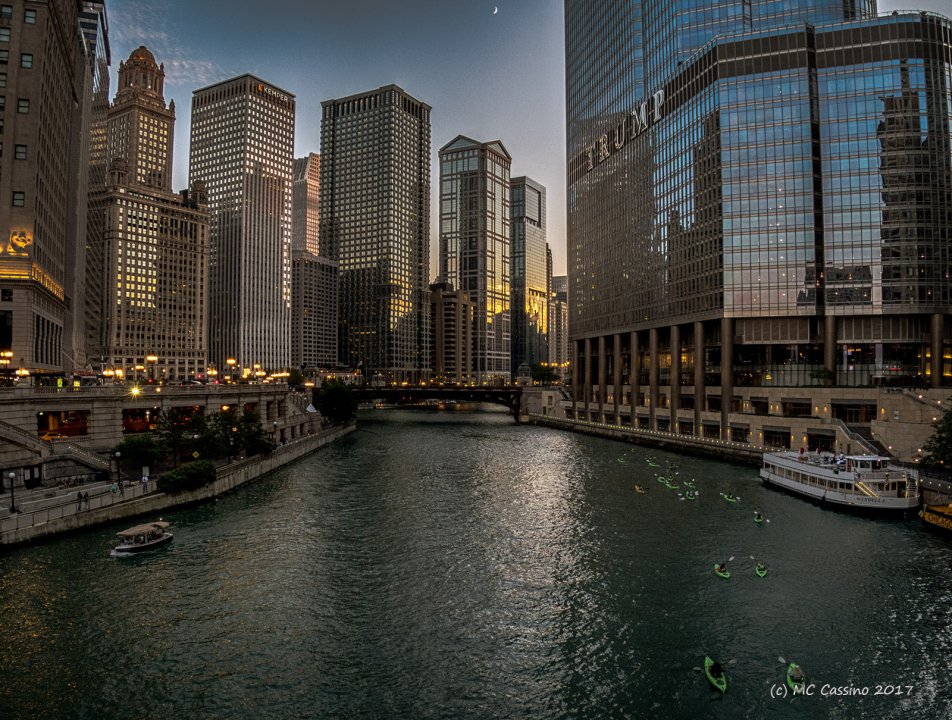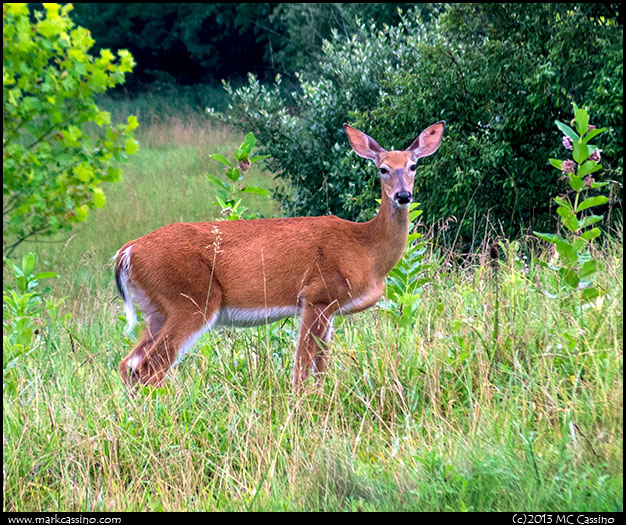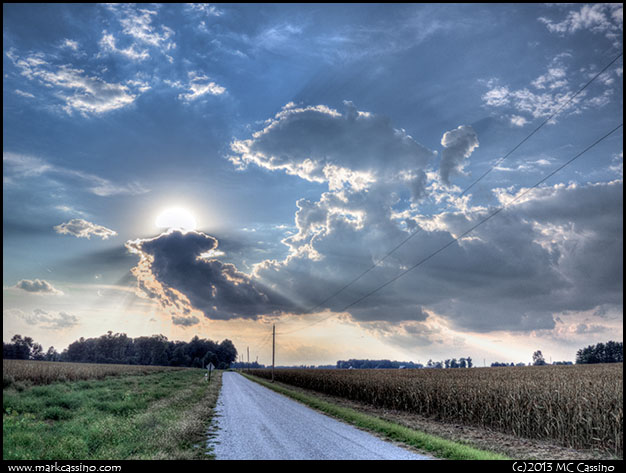Category: "Pentax Q"
Posted by mcc on Jul 28 2013 in Wildlife Photography, Travel, Pentax Q
Posted by mcc on Jun 01 2013 in Wildlife Photography, Pentax Q
I travel a bit for my job and this week spent a little time in West Virginia. They got deer there like Carter’s got pills. Yesterday evening I took a few snapshots of some of the deer on the grounds where I was staying, they were fairly tame but wouldn’t really let me get all that close.
I got the Pentax Q to use for business trips and have put together what I think is a pretty nice kit that covers everything form an ultra wide angle to a 280 telephoto, and still fits in a bag that at best would hold a DSLR and standard zoom.
These shots were taken with the Q and the 06 Telephoto lens, which is really a remarkable optic. I must confess that I introduced an element of incompetence in that I accidentally enabled the build in 2 stop neutral density filter in the lens - great for allowing wide open shots in bright sun but not so great in end-of-day light. So the shots were taken at a little higher ISO than they could have been and are not as sharp as they could have been… Well, I aint so good at showing off this fine camera, but I do love shooting with it.
Click on the pictures for larger ones.
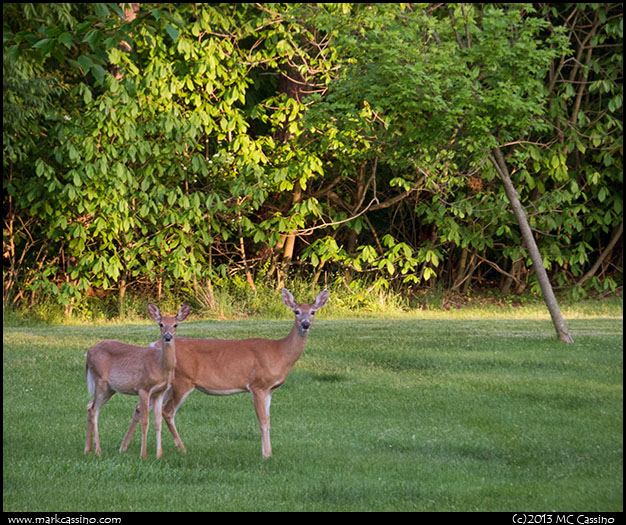
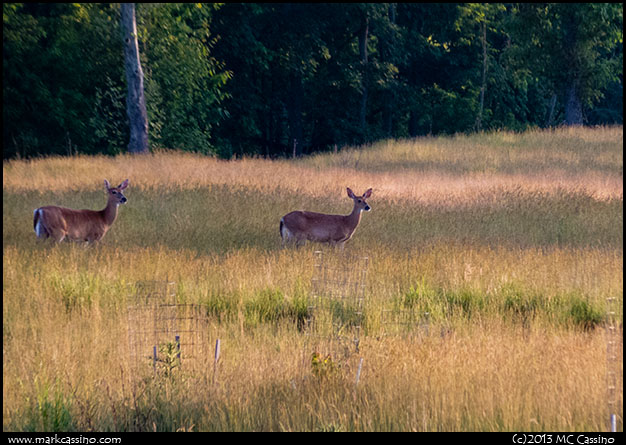
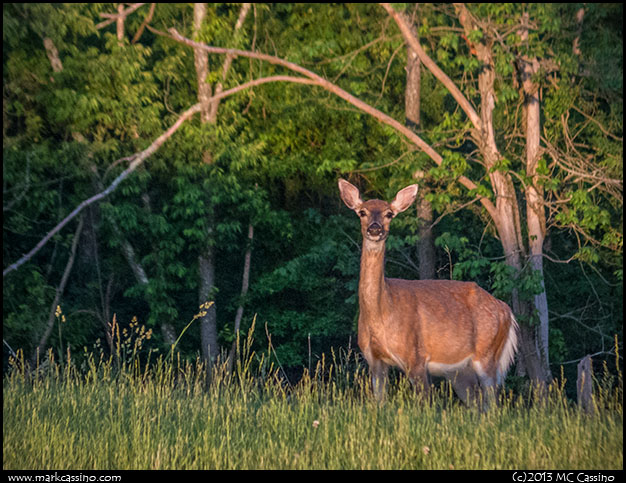
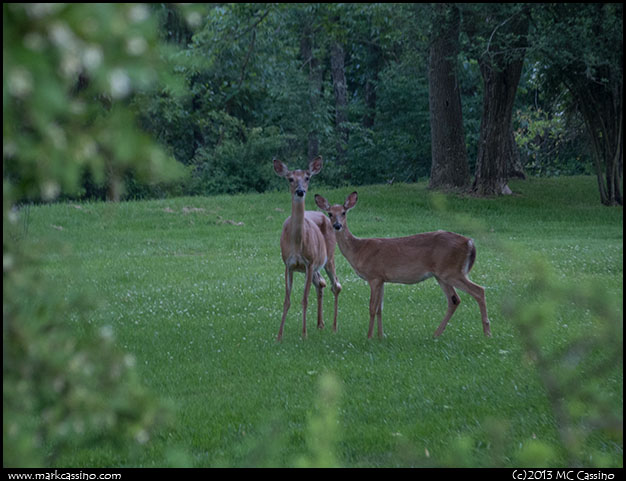
Posted by mcc on Apr 14 2013 in Insect Photography, Macro Photography, Pentax Q
Spring has been slow to come to west Michigan this year. Yesterday temps hovered around freezing and the sky spat out a mix of snow and rain. Today started the same but in late afternoon the clouds broke and under a warm mid April sun the temperatures rose quickly, even into the mid 50’s. I toured my little backyard looking for some photographic subjects and found a few tiny midges sitting on the fence.
The midges were small - maybe 3 to 4 mm from toe to toe. It was breezy, but I thought I’d give the Pentax Q another test. Initially I shot with a 50mm macro lens, but the magnification was not enough for these tiny insects. So I changed up to a 100mm macro, added an extension tube to get beyond 1:1 magnification, and took a crack at it using the Bolt LED ring light. Here is the best shot out of about 100 tries - after about an hour the temps got even warmer and the midges flew off into the late afternoon. The bushy antenna suggest that this is a male midge.
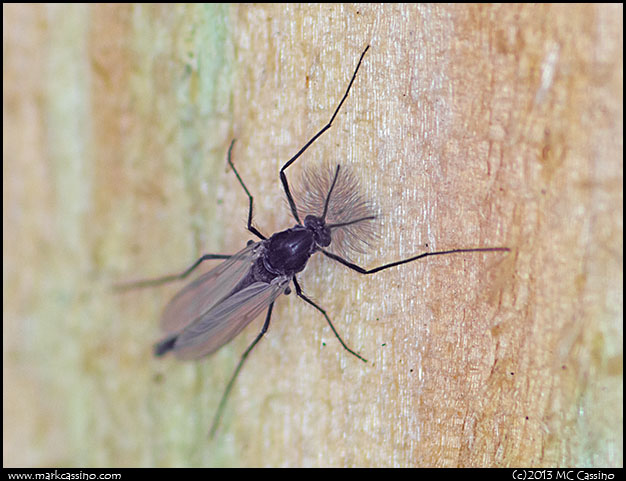
Click on the image for a larger file.
Gear used to make this photo was a Pentax Q, D-FA 100mm macro, 25mm extension tube, LED ringlight and a tripod. taken at f4 and ISO 125. The image is not cropped.
Posted by mcc on Mar 29 2013 in Insect Photography, Macro Photography, Pentax Q
The thing that gets me excited about the Q is not that it is a great do-it-all pocketable compact (because it isn’t) but rather that it is a great interchangeable lens KIT and I can carry a small bag and have tremendous capacity.
With that in mind, I wanted to come up with a macro setup that would compete with my DSLR / A* 200mm macro rig but be small enough to fit into a little camera bag. My choice for the macro lens was a Pentax SMC M50 f4 macro - a lens that I know to be remarkably sharp - on a generic Q to K mount adapter, and a Bolt VM-110 LED ring light (continuous light source.) I had to go with a continuous light source because the electronic shutter on the Q combined with a generic K to Q adapter will only flash synch at 1/13th of a second.
While the Pentax SMC M 50mm f4 macro lens is somewhat slow, I have used it in snow crystal photos in the past and know it to be remarkably sharp even wide open. It is also pretty small and light for a 50mm macro. Mounted on the Pentax Q it is the equivalent of a 275mm lens on a 35mm (a.k.a. full frame) system. The maximum magnification is only 1/2 life sized, but since the Q’s sensor is only about 1/4th of an inch across that still allows for some full frame photos of pretty small subjects…
The Bolt Ring light arrived earlier this week and I assembled the Q macro setup. Overall, it is a really sweet little outfit. Here is a photo of the Q, M50 & adapter, and Bolt ring light. While it is not tiny it certainly is quite compact:
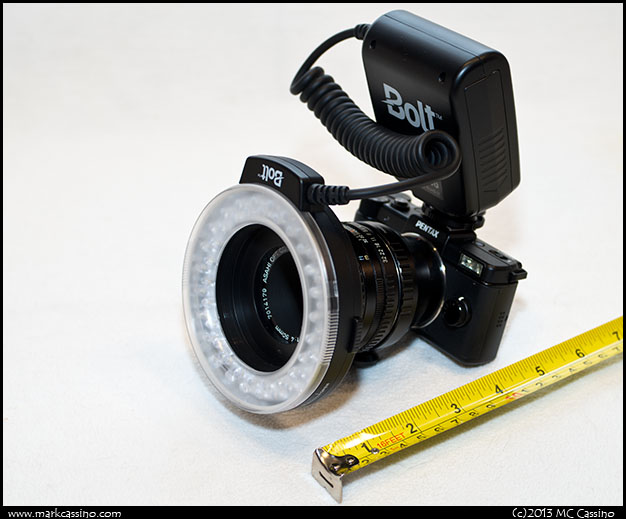
OK - On to test the setup. I fired up the Bolt light and did a few tests on a $20 bill. Here is a test at maximum magnification:
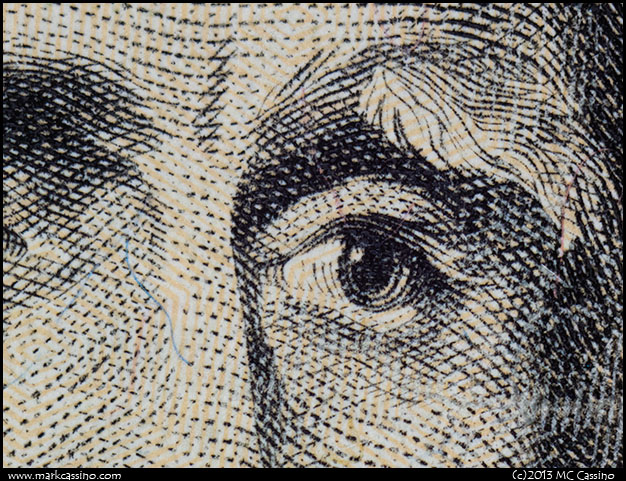
An actual pixel crop:
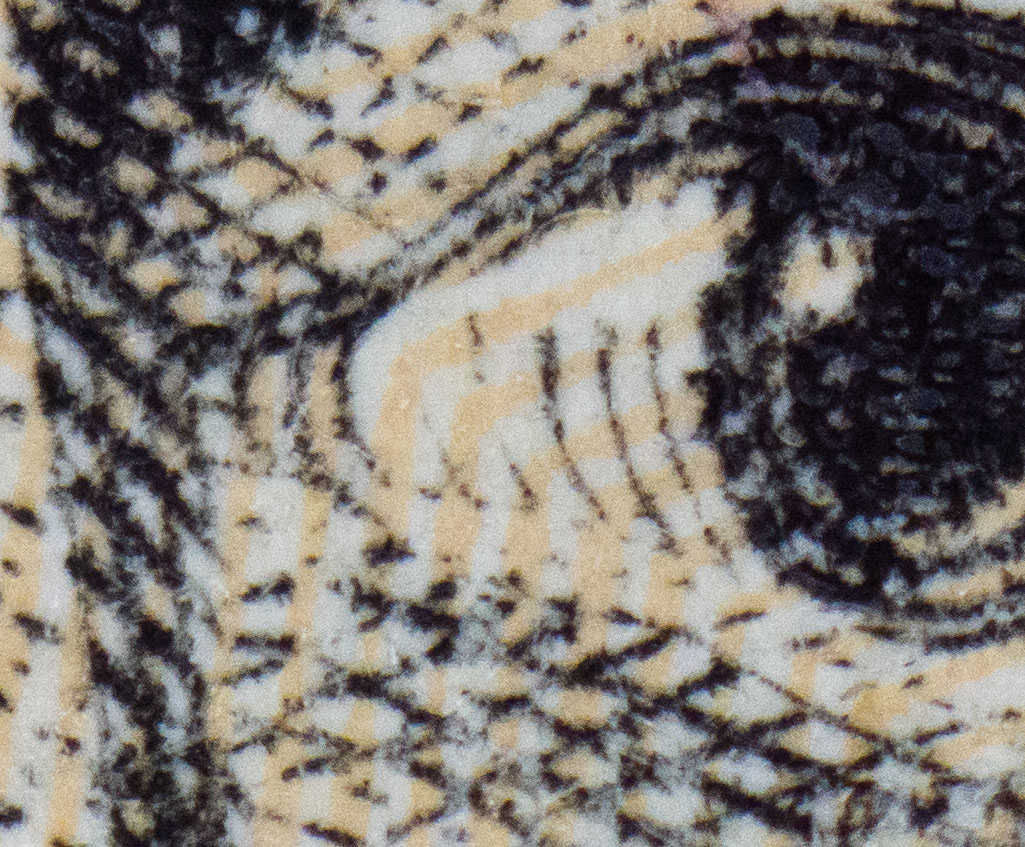
That image was taken with the front of the lens / ring light about 5 inches from the bill. The Bolt ring light kicked out enough light to allow hand holding of the camera at ISO 400.
So far so good. In reality, though, I don’t expect to take hand held macros of 1/2 inch items on a casual basis, so here is a more likely scenario - a shot taken with the front of the camera about 1 foot from the bill. Again, it looks good to me:
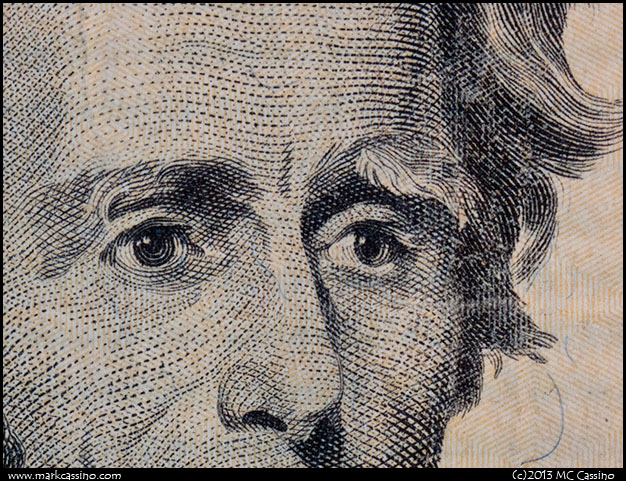
Again with an actual pixel crop:
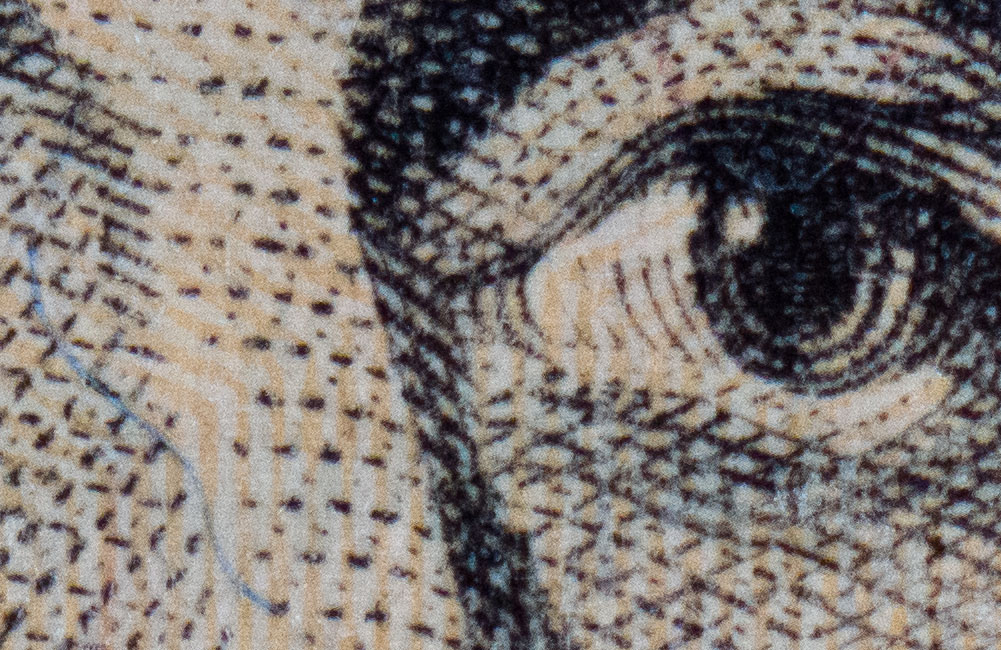
Now to try it in the real world…
We have had a late spring and the crocuses are just starting to bloom. The crocuses draw honey bees and my routine spring training involves going after the bees with my insect macro setup which hopefully gets me into shape for summer insect shooting. This spring I decided to try the Q setup…
Unfortunately, things did not go entirely as planned. I took a bunch of test shots, none of which were any good. But I immediately noticed weird artifacts popping up in the shots:
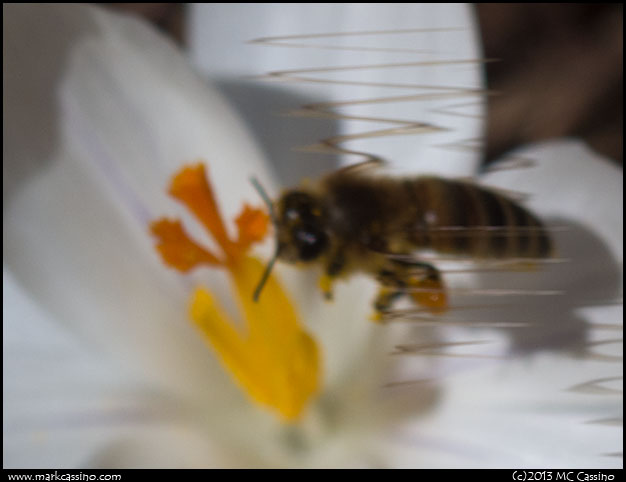
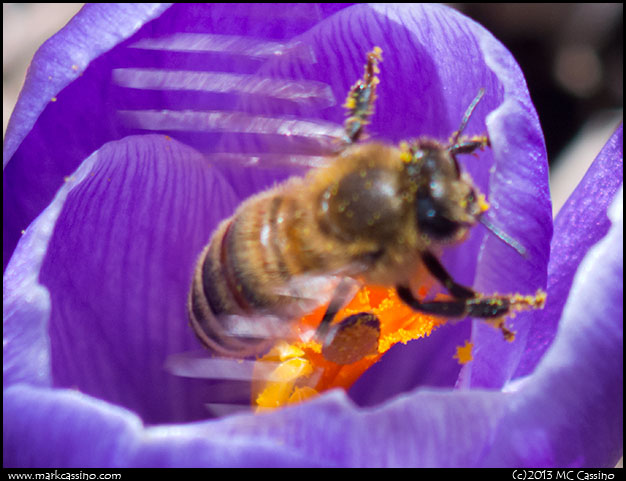
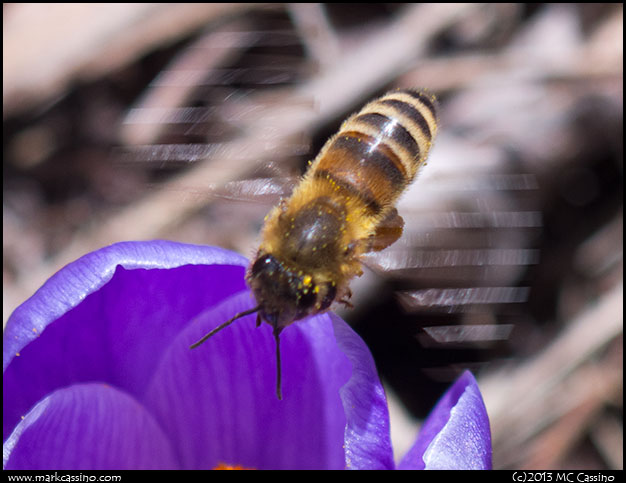
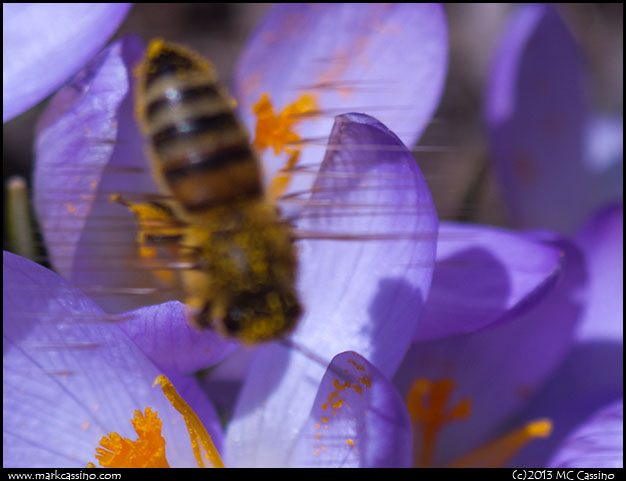
Arg… So this is the dreaded “rolling shutter distortion” I’ve heard about…
Here’s what’s going on: the Q does not have a physical shutter (i.e. - metal louvers that open and close to expose the sensor.) Most dedicated Q lenses have a leaf shutter built into the lens, but when using the Q to K adapter there is no shutter. In this case, the camera uses an “electronic shutter” where it turns the sensor on, reads the light levels, then turns it off. But it can’t do it all at once, so it turns on parts of the shutter sequentially. While it is still very fast, things like bee’s wings are faster and so they create distortion. You can read about this on Wikipedia.
So where does that leave me… I was quite excited about using the M50 macro on the Q. The native Q lenses are very impressive and versatile - the 01 is a fast normal prime, the 02 is a solid normal zoom (equivalent to a 28-85mm full frame zoom), the 03 fisheye is a very sharp ultra wide angle (17mm equivalent) and the 06 telephoto is a remarkably good telephoto zoom equivalent to 85 - 250mm).
The 50mm macro is a good idea and equivalent to a 275mm f4 macro, but falls short in the narrow category of flying insects. It still works great for taking pictures of $20 bills, flowers, and other stationary or slow moving items. Here are a few bees, and one fly, taken with the 50mm that illustrate that:
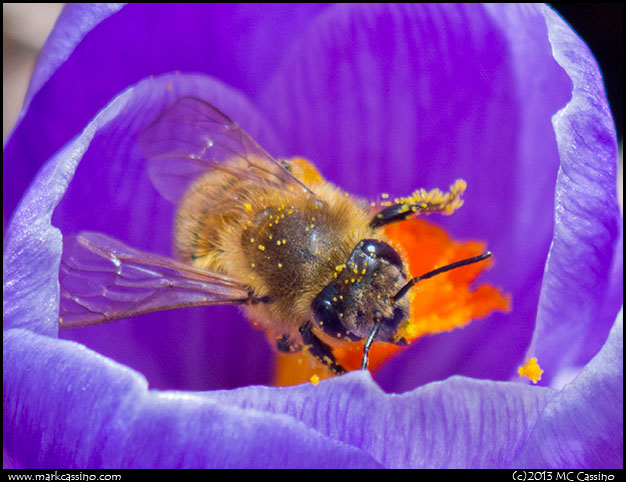
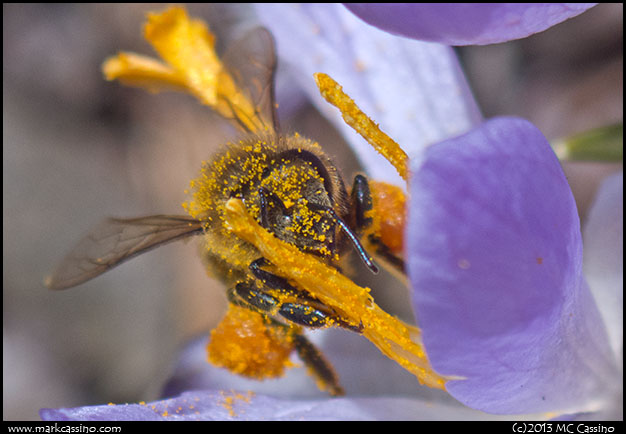
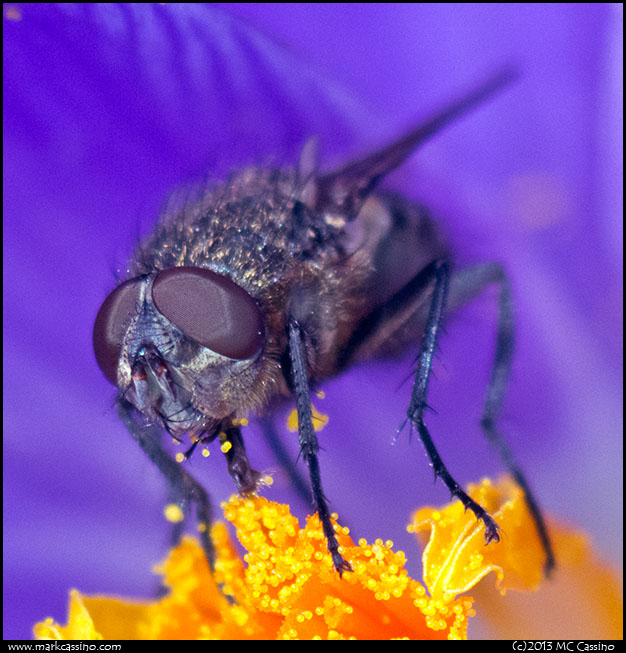
So for the next step I think I will try a Raynox 250 close-up adapter on the 06 telephoto zoom. It is not too expensive and would be generally useful on setups other than the Q. Alternately I might get the official Pentax Q to K adapter which has a built in shutter and would overcome the rolling shutter distortion - but would also require manually setting the shutter and shooting in TAv (ISO priority) mode.
Going back to my opening point about the Pentax Q (or Q10) - the beauty of this system is not that it is simply small but rather that it is versatile and small. My biggest frustration with DSLR’s (and before them film SLR’s) is that short of carrying a very hefty bag I could not tote a serious macro setup or broad range of lenses. To be able to cover everything from (in 35mm equivalents) 17mm to 275mm in one small bag, and to have the equivalent of a 275mm macro lens in that small bag is itself quite exciting. And while many online reviewers can’t get over the Q’s small sensor size. At lower ISO’s the output from the Q meets the most demanding standards, and at higher ISO’s it is fine for non technical applications. The small sensor size does mean that you are limited if you want shallow DOF, but if you are a macro shooter like me you will still be hungry for DOF in high magnification shots. In fact, given the image quality, the enhanced DOF from the small sensor, and compatibility with existing lenses, I’d expect the Q / Q10 (and beyond) to become a cult classic of serious macro photographers who also appreciate portability in their gear.
Posted by mcc on Jan 20 2013 in Snow Crystal Photography, Snowflake Photography, Pentax Q
A few months ago I bought a Pentax Q system. While this camera is usually criticized for its very small sensor, I saw a tremendous opportunity for macro photography. I really enjoy the camera and use it for a wide variety of purposes with excellent results, but I have been hankering to try some snow crystal shots with it.
Why snow crystals? The sensor on the Q is a diminutive 6 x 4.5mm in size. A large snow crystal would be about that size, meaning that one could get a frame-filling snow crystal image (for a large crystal) at a simple 1:1 magnification, and smaller crystal could easily be photographed at 2:1. This makes for a much simpler setup than what is required for shooting snow crystals on an APS-C DSLR – where magnification needs to be 4:1 to 8:1. The Pentax Q is compatible with all my existing Pentax flash gear and focus peaking should simplify focusing. So I figure I’d give it a try.
So today, when it finally snowed, I tested the Q on my snow crystal macro setup. I usually use a reverse mounted 50mm macro lens (Sigma EX 50mm f2.8) on a bellows (135mm maximum) and extension tubes (180mm maximum). A flash is used to light the crystal from below. I decided to try the Q first with this setup, but just the lens and bellows. Due to how the bellows mount on the macro-focusing lens, they have to be extended to at least 48mm. So, here is a plastic ruler, the metric scale, taken with the Pentax Q and 50mm macro lens reverse mounted on a bellows extended to 48mm. As you can see, the frame covers less than 2 mm on the longer axis. That would be great for many snow crystal shots.
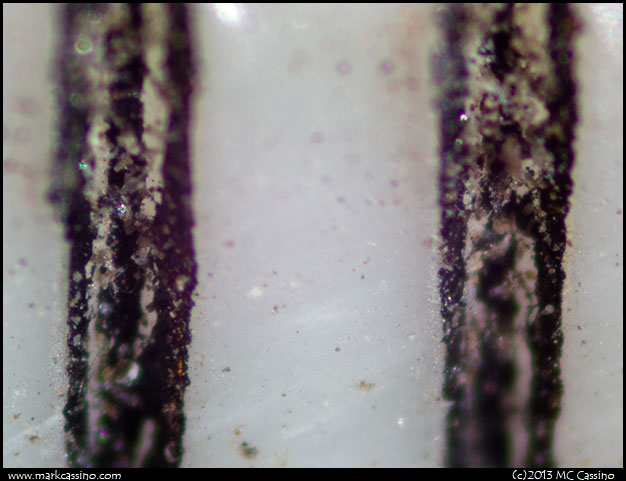
So here is one of my first shots. Not a pretty crystal, but the shot is clear enough:
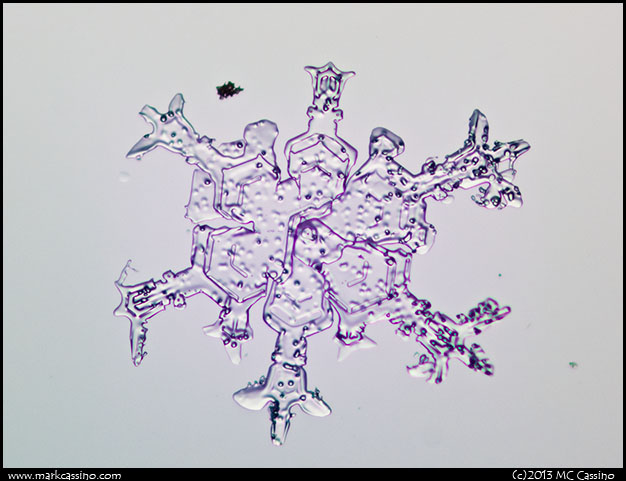
One of the problems I saw right off is that the flash stays in P-TTL mode, even though P-TTL needs access to the lens’s electronic data to function properly. I could not figure out how to get the flash into manual mode, so I just worked with it the old-fashioned way, and put a diffuser over it to manage the power level.
So here is another shot – even at the minimum magnification, the crystal was too big to fit in the frame:
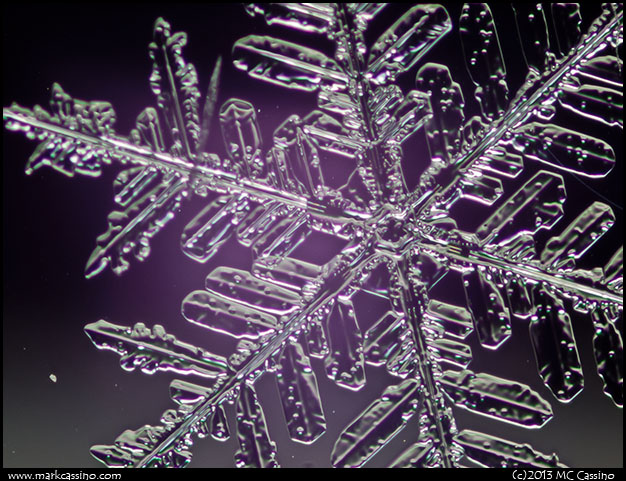
But… What’s that magenta rectangle in the middle of the shot? It can be minimized by desaturating the image, but I don’t like it. Here’s the desaturated image:
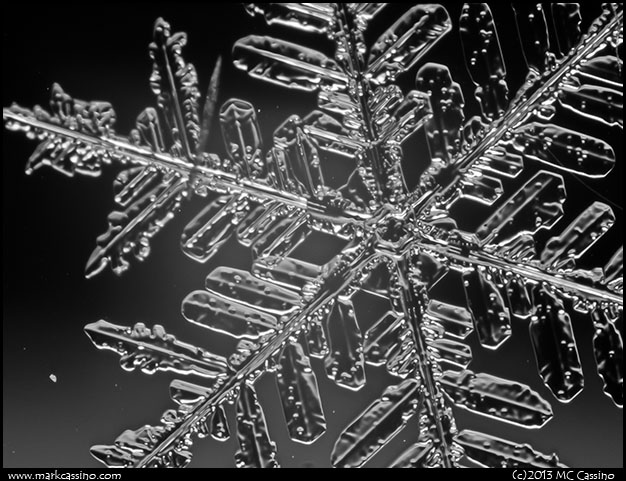
So… Plan B – skip reverse mounting and just use a macro lens mounted normally and shoot at 1:1 or 2:1. I tried the DA-F 100mm macro, but the working distances posed a problem with my tripod setup. So, back to the Sigma 50mm. The lens will go to 1:1 on its own and with a 25mm extension tube it will do 1.5:1. So I setup the Sigma 50 mm macro lens on a 25mm extension tube.
An early test - here again the crystal was larger than the 1.25:1 magnification that I had set up the lens for:
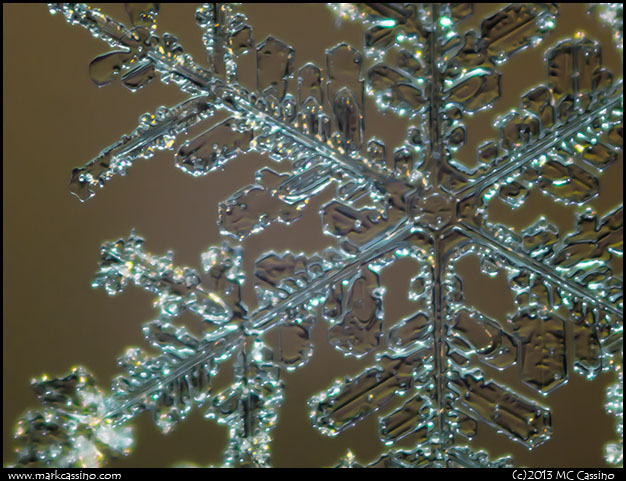
Here’s a very “fluffy” snow crystal lit by a flash from below and compact florescent lights from above:
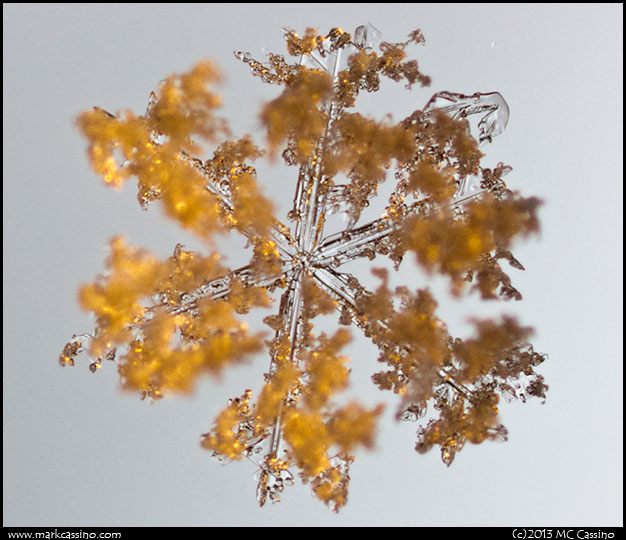
By this time the snow had stopped… So that was it for today’s experiment. I’ll continue working with the Q for this kind of photography – need to work out what is going on with the flash and test some other lenses. I guess that the magenta triangle was some sort of lens flare from the reverse mounted lens, but there is still a bit of it in the shots taken with the lens forward mounted. I have never seen that in shots taken with other cameras (I’ve used this setup with the *ist-D, K-10D, K-7 and K-5.)
As for noise – at ISO 160 there is very little noise. The advantages of the system way out weight the disadvantages.
More experiments to come - assuming it snows some more! At the end of the day, the grass is till poking out of the snow. Less than an inch fell today, but more is coming.
Posted by mcc on Jan 13 2013 in Landscape Photography, Midwestern Landscapes, Travel, Pentax Q
Posted by mcc on Sep 17 2012 in Photo Techniques, Bird Photography, Macro Photography, Pentax Q
I’m really enjoying my new Pentax Q kit… the dang thing is just so much fun I find myself snapping shots like crazy, but somehow I feel that when I want to take a serious photo, it is there. It is just a joy to use, unlike most compacts that I’ve tried.
But in one area I have hopes for serious applications - and that would be in the realm of extreme macro photography. I’ve commented before that the very small sensor size found in compact cameras is a real boon to macro photographers because it allows for excellent DOF at wide apertures. The Pentax Q with a K to Q adapter applies a 5.62x crop factor to the focal length of lenses. So that D-FA 100mm macro turns out to be a 562mm macro… Very cool.
The great thing about the Q and SLR lenses the macro work is that the lenses give tons of working room. You can quite easily shoot a small bug from a yard away (with the 200mm lens) and get frame filling shots.
But, the Q’s tiny sensor poses a challenge to any optic. The photo receptors are so small that only the highest resolving lens can take advantage of them. Diffraction takes a toll at fairly open apertures and small amount of color fringing can make an image too soft to use beyond web sized images.
So I’ve been testing the Q with a variety of lenses. Here are the results so far (I have a lot of testing to do yet.)For each image there is first an un-cropped full image (reduced to web size) followed by an Actual Pixel crop.
All of the shots below were taken with the camera and lens firmly on a tripod, usually using the 2 second self timer to minimize any shake from pressing the exposure button. No flash was used. Had I used flash I think that the apparent detail could have been higher, since proper lighting can accentuate details.
Macro lenses first, in descending focal length order.
Pentax A* 200mm f4 macro:
Well, you’d *expect* a lens like this to deliver, and it does a fine job. Clearly the best I have tried so far.
Here are 3 shots, with actual pixel crops following. I took these on breezy overcast day, so I pused the ISO a bit. The first shot is ISO 640, the second two are ISO 800. The Q can get noisy but keeps the color noise down. Overall, I find ISO 800 workable, which is a surprise.
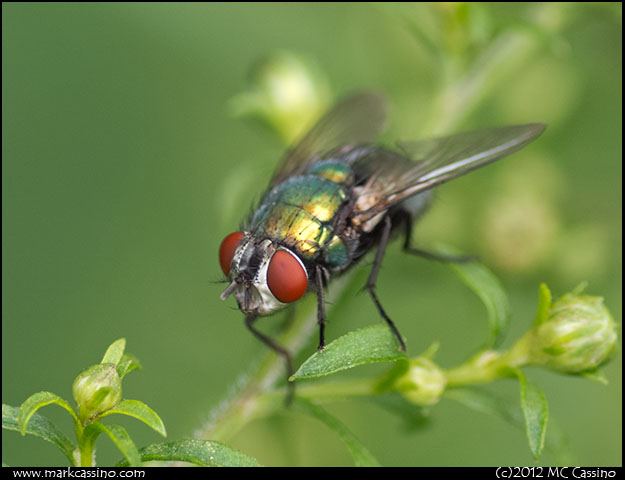
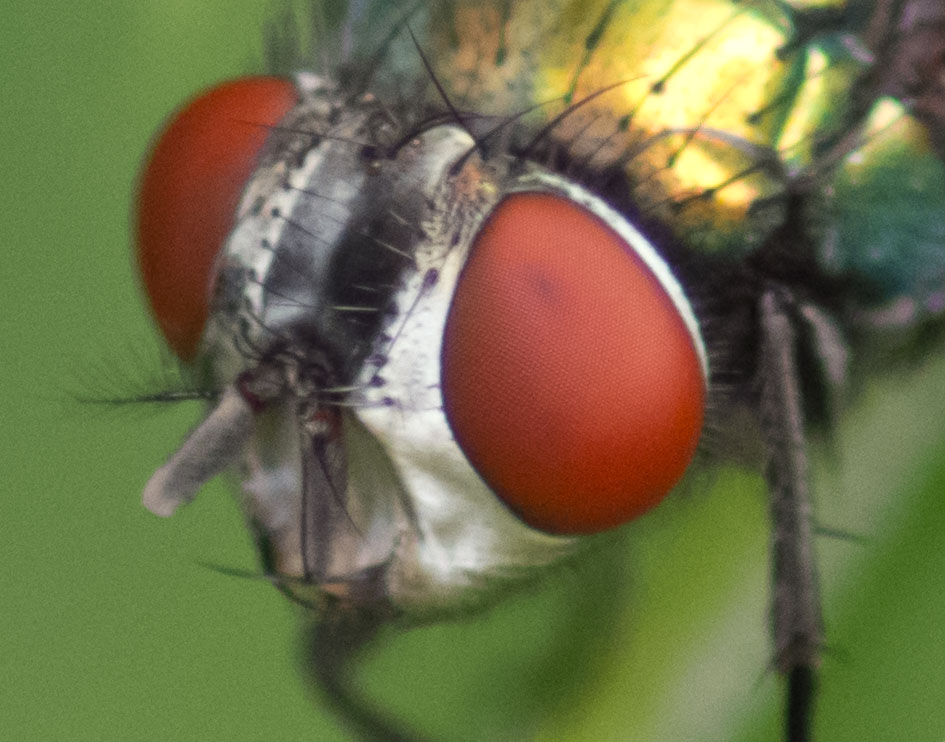
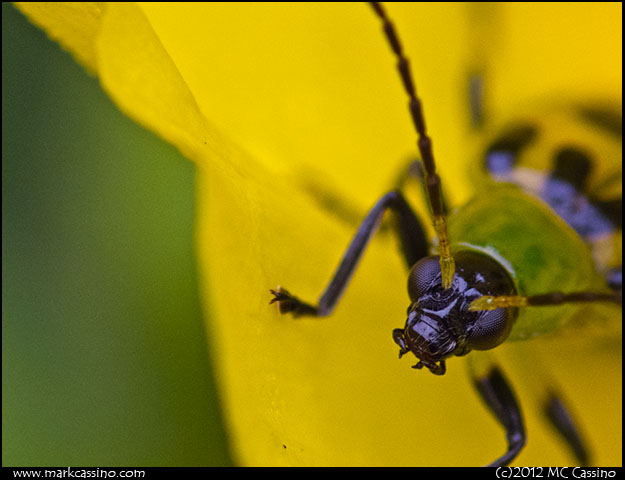
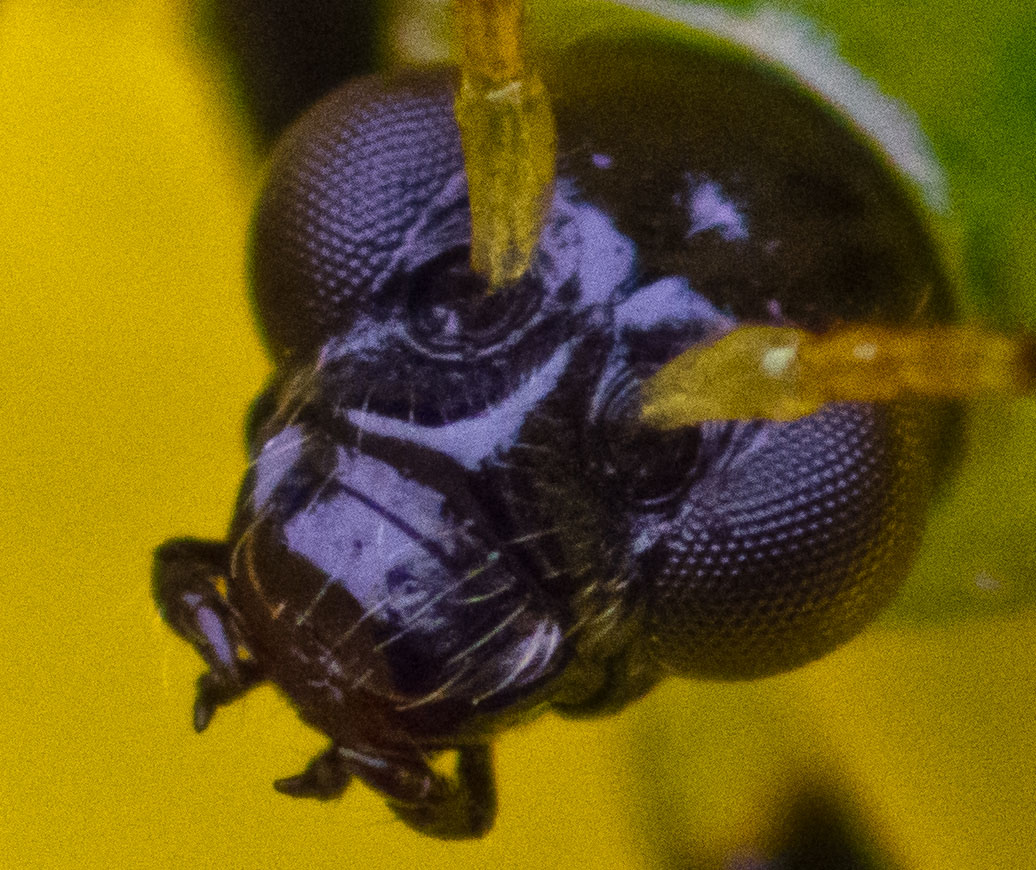
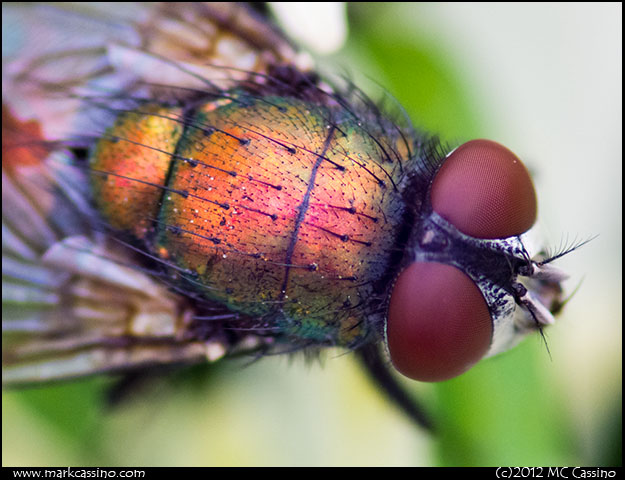
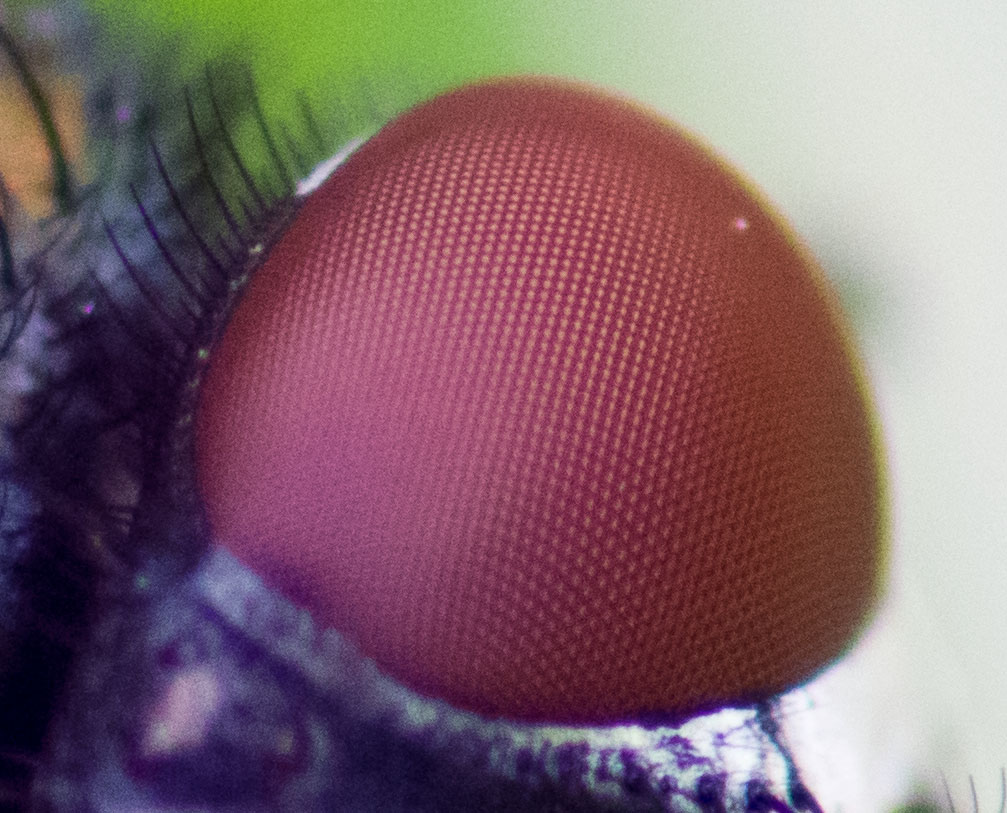
I think the shots above are at f 5.6. I did a series of shots, starting at f4 and stopping down a click with each successive exposure. By f 8 diffraction really impaired the level of detail. F 5.6 seemed to be the best compromise between sharpness and DOF. The last shot is at 1:1 magnification… Depth of field is still pretty tight even with the Q’s small sensor.
Pentax D-FA 100 f2.8
This lens fared pretty well, though not up to par with the A* 200. The shots below were taken at f4. The ISO was 250, 125, and 250 respectively.
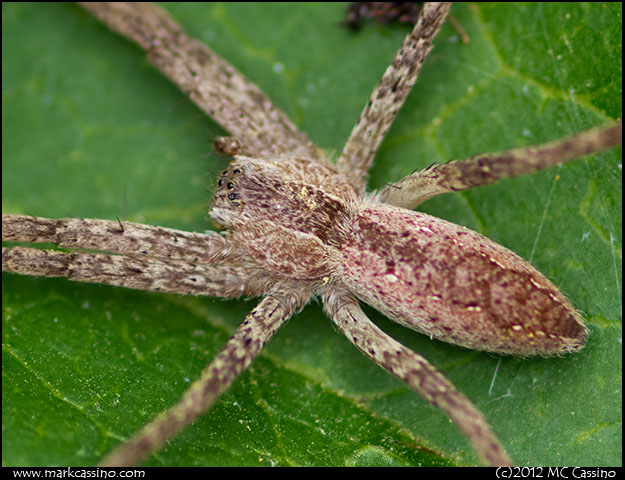
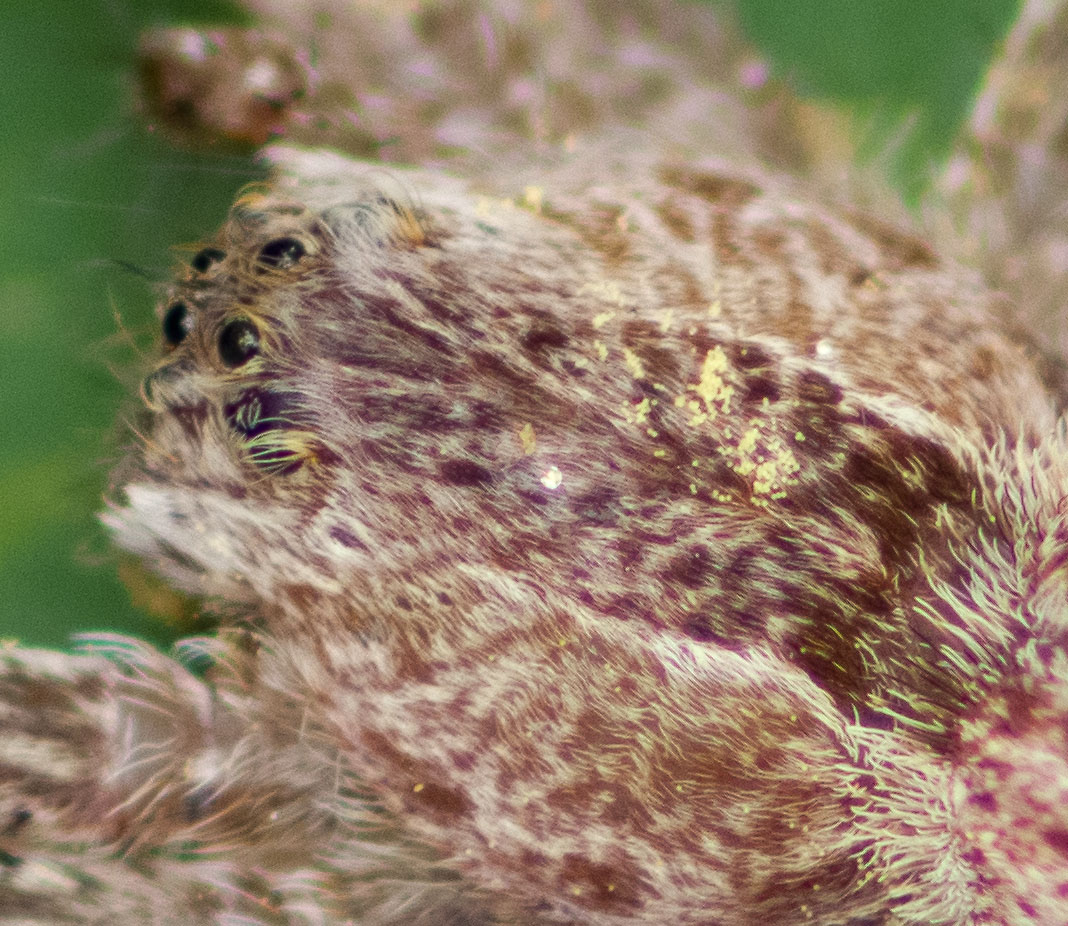
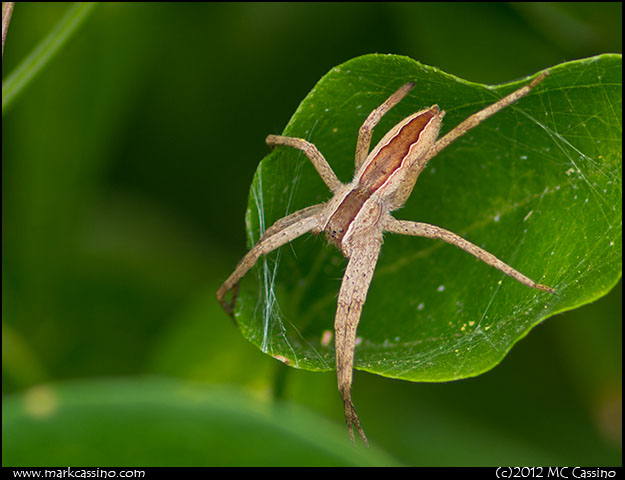
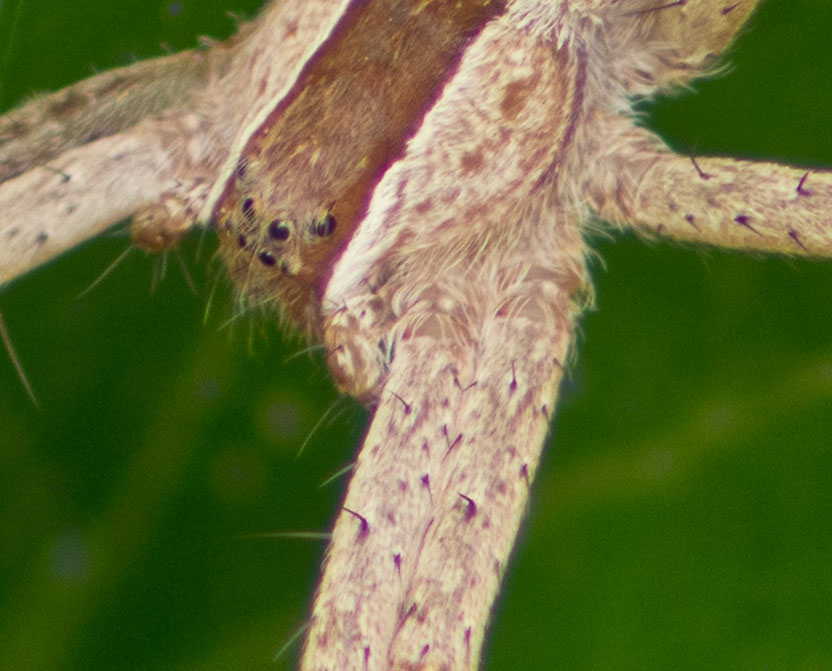
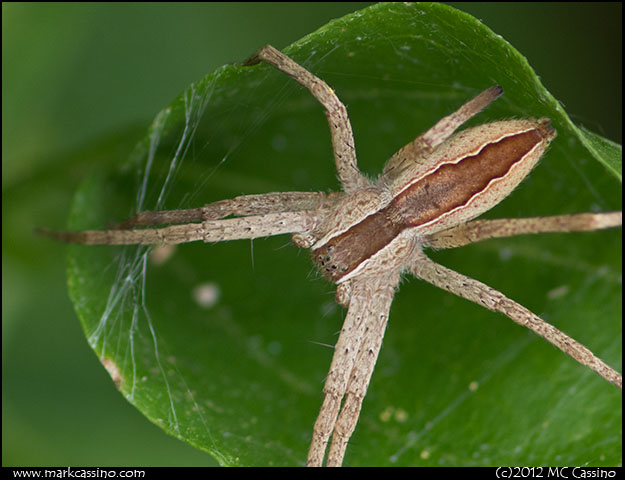
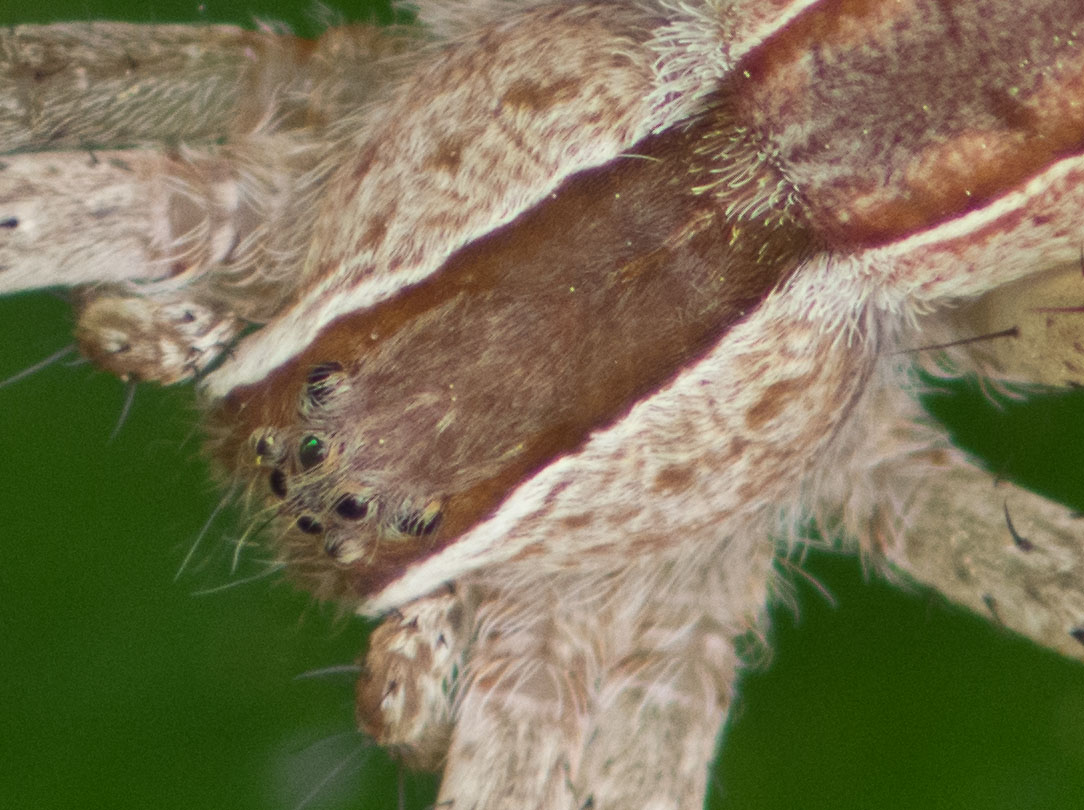
Kiron 105mm f2.8 Macro
A legendary lens from the 80’s that back in the days of film was virtually unrivaled. Sadly, it is not up to the demands put to it by the Q. The chromatic aberrations in the fly shot really mess up the details in the eyes. The test shot of the cocklebur is just as bad. I’ll keep this for shooting with Tri-X!
These shots are at ISO 125 and 160 respectively - so while the Q is pretty good at higher ISO’s, it never gets to truly low noise levels at low ISO’s….
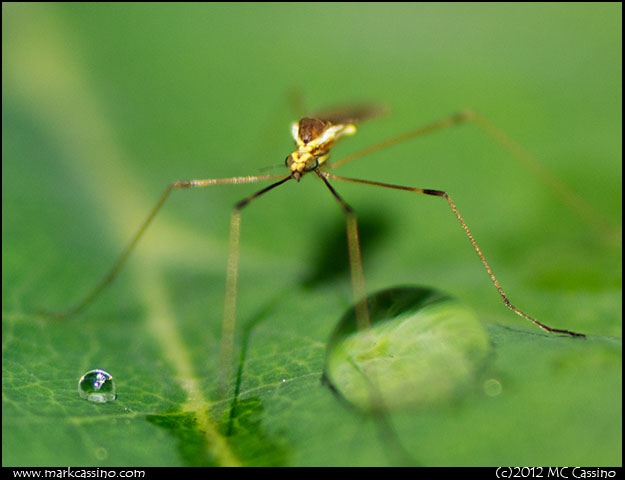
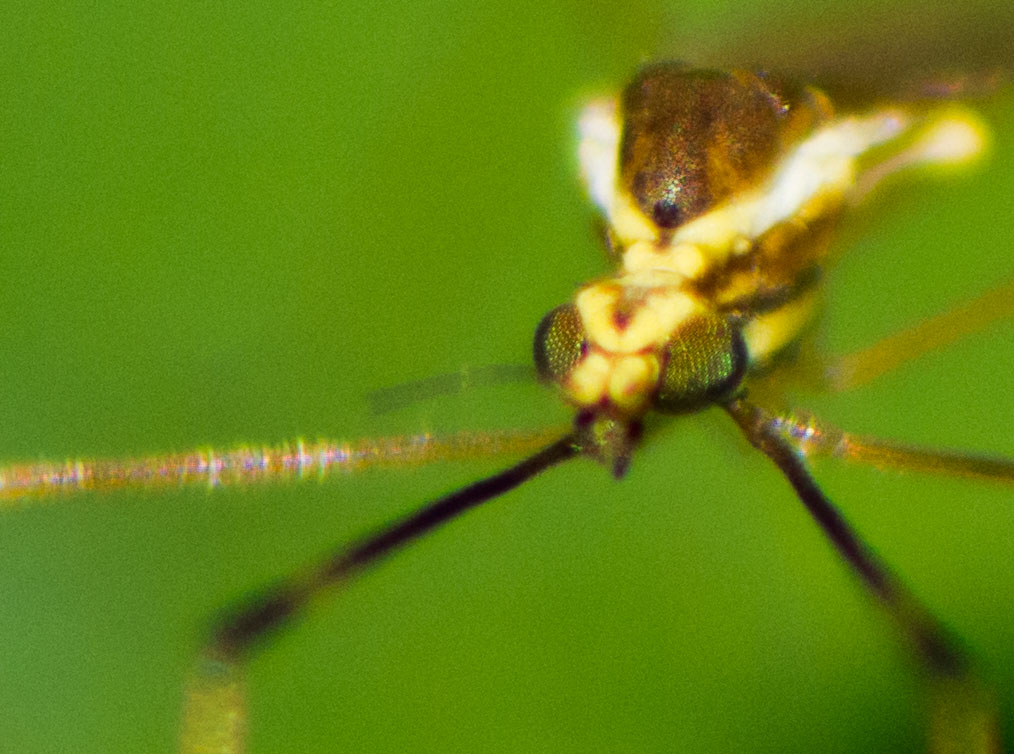
(Drat! That could have been a good shot!)
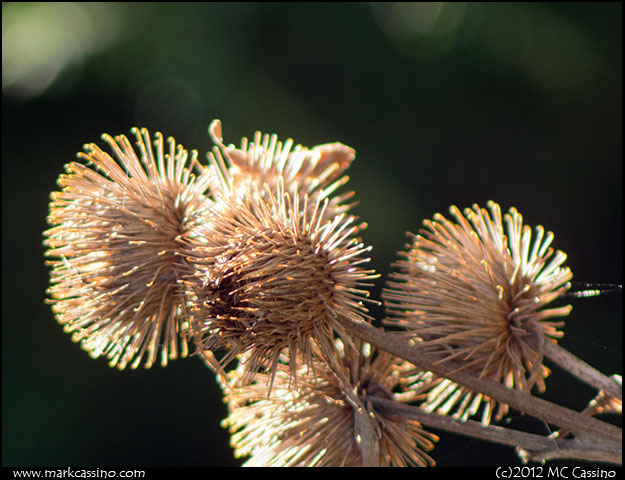
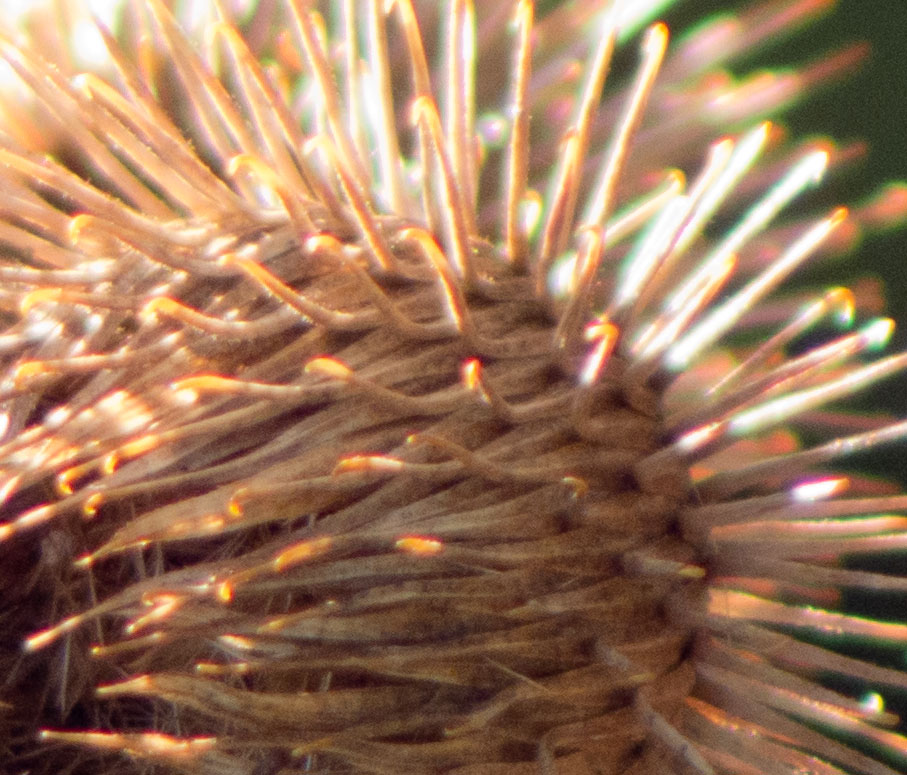
XR Rikenon 50mm f2
Rumors on the Internet persist - is this one of the sharpest lenses ever? Since the Q is pretty demanding, I thought I’d give it a try. I only made a half hearted effort - I put the lens on two 12 mm extension tubes and then back onto one. The sky was clear and the sun was bright, but the wind was gusting like made. I took less than 10 shots and decided to stop wasting by time… but then found this image stuck in the middle of a bunch of motion blurred photos:
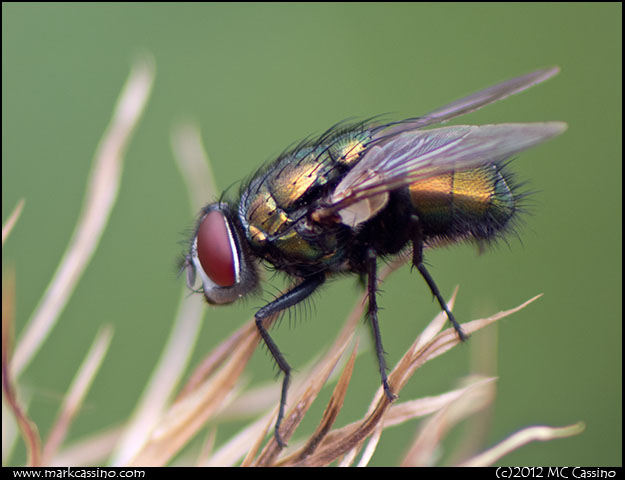
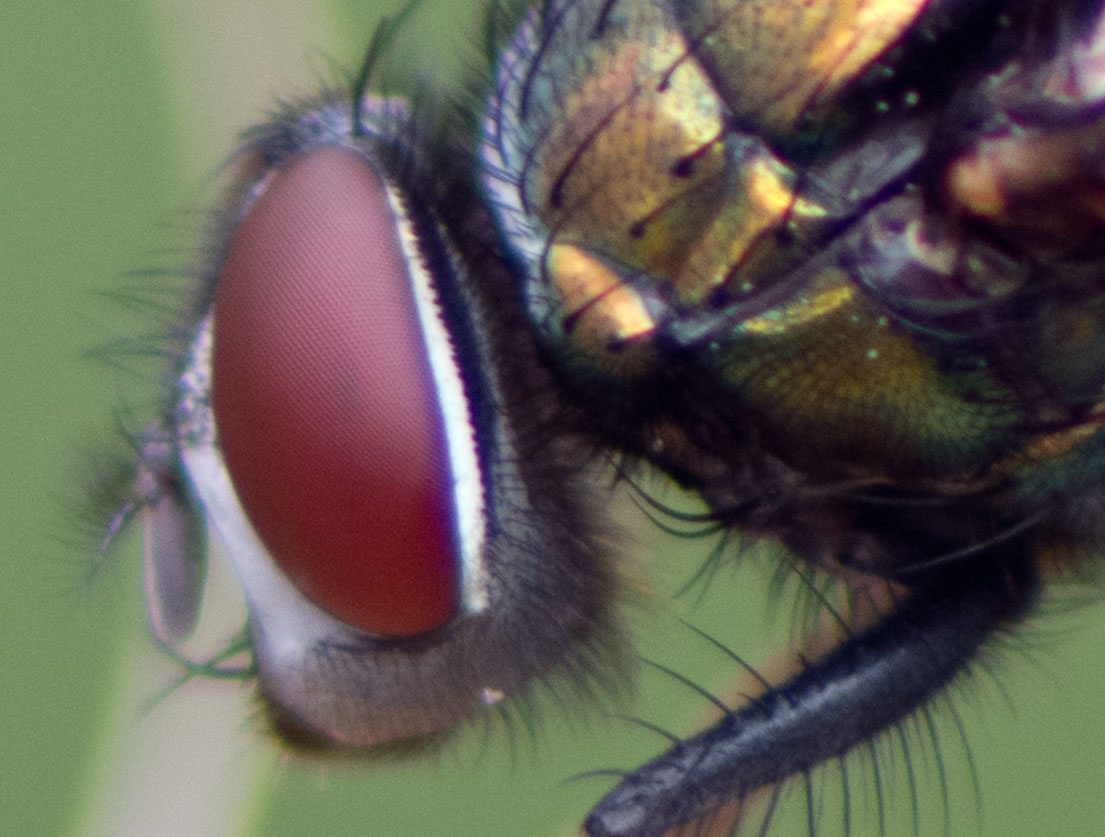
That was at ISO 200. The results are close to the D-FA, and certainly warrant another try with this lens.
A* 300mm f4
OK - aside form macro photos, I was also interested in using the Q as a compact birding camera, so I tested it with an A* 300 f4. On the Q this lens is the equivalent of a 1686mm lens on a 35mm camera. Unfortunately, the A* 300 was not up to the job - a couple test shots, first of a goldfinch and second of a house finch.
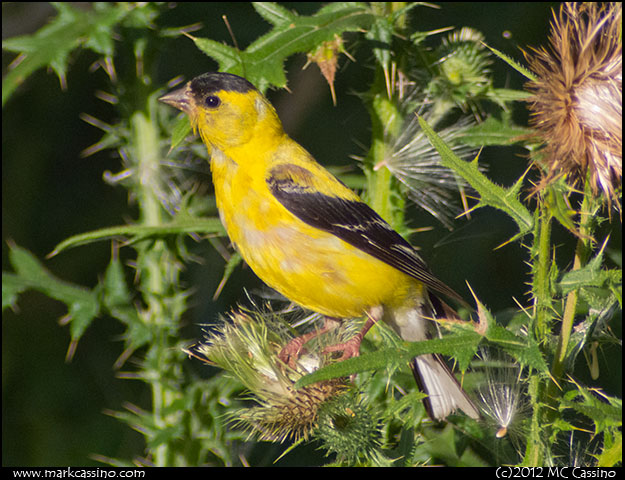
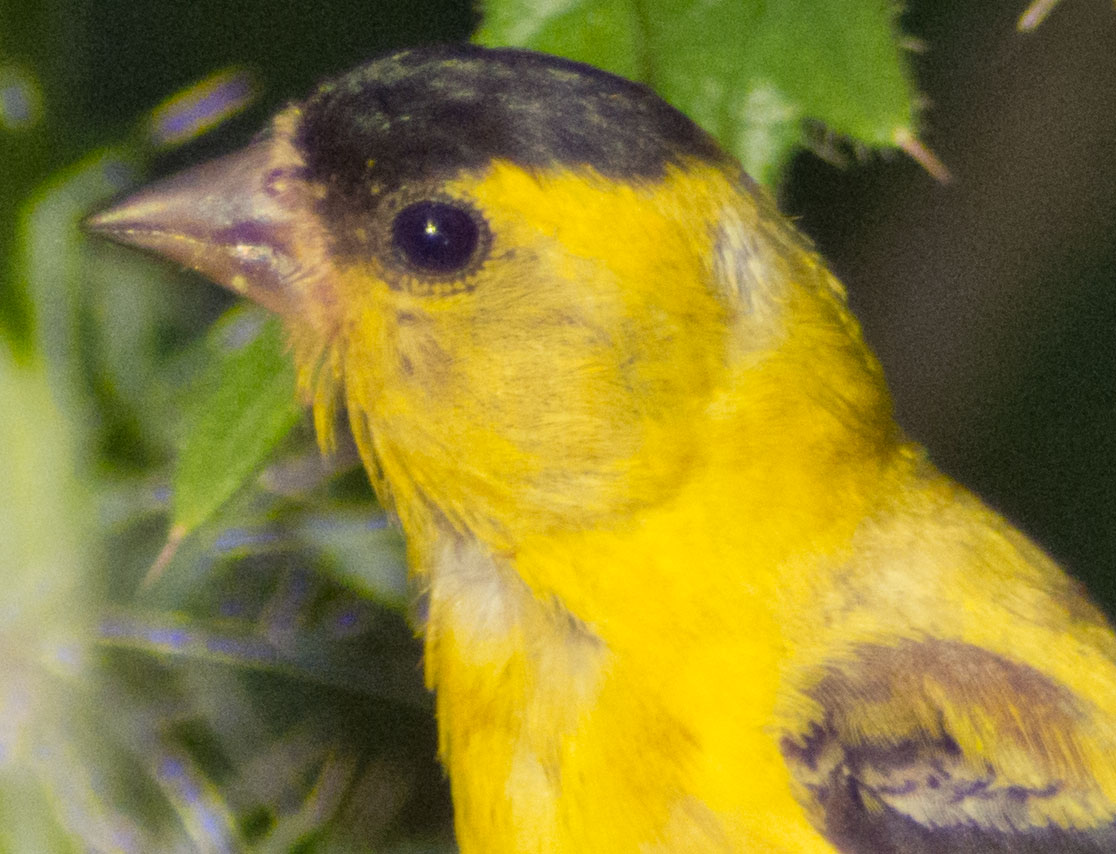
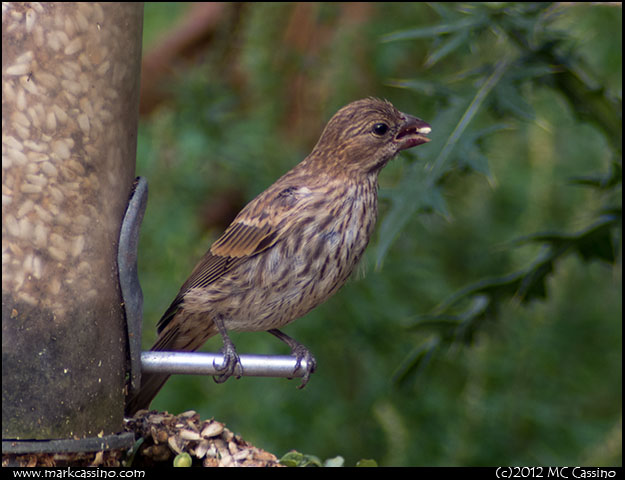
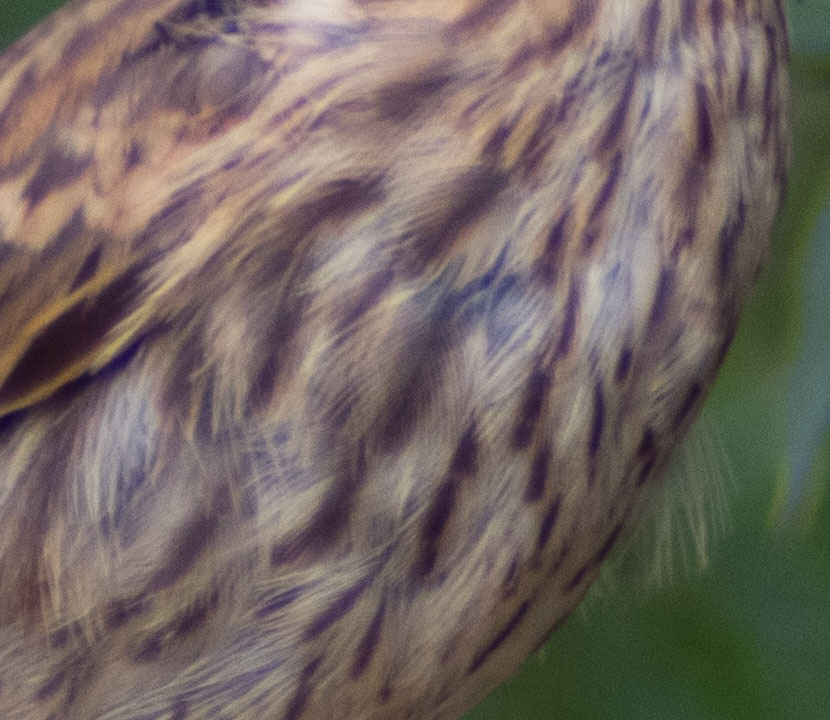
For an example of what I would *like* to see, here is an actual pixel crop of a photo I posted recently, taken with the Pentax K5 APS-C sensor camera and A*400mm lens with AF 1.7x converter (equivalent to 1360mm on a 35mm camera.)This is from a recent post.
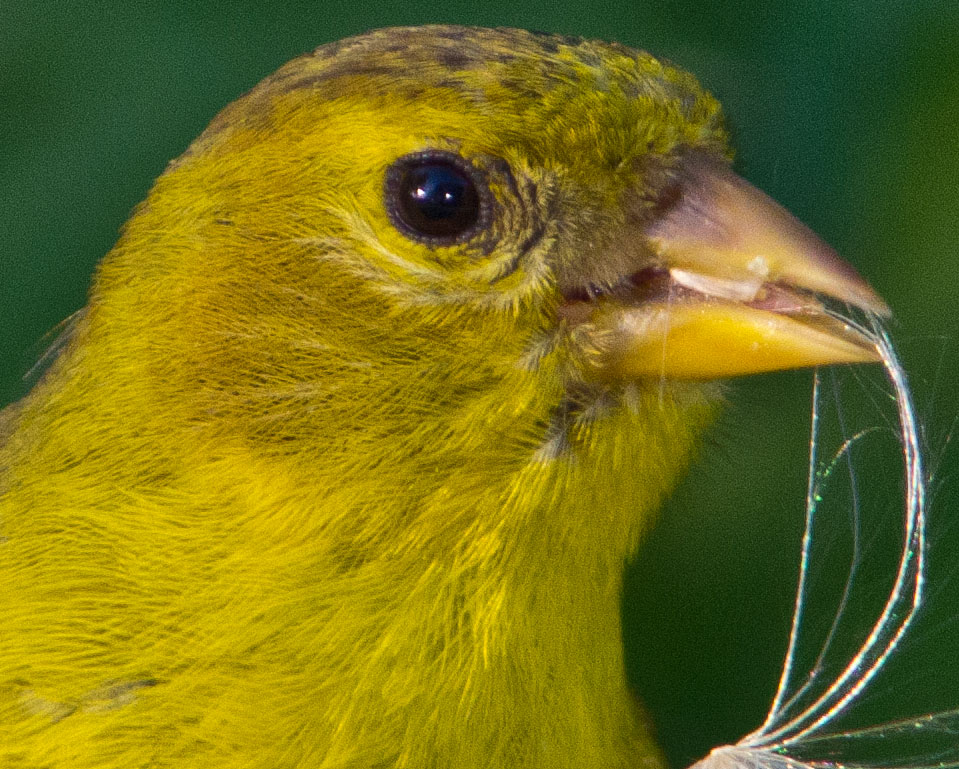
Well - I’m still hoping for clarity like that on the Q. If you are peeking at the noise levels in the bird images - the top goldfinch photo taken with the Q was at ISO 500, the house finch, aslo taken with the Q, was at ISO 200. The K5 goldfinch shot was at ISO 800…
But, to give the birds photos some perspective, here is an old photo (circa 2002)of a Yellow Warbler taken with a Pentax Mz-S and the same A*400 / 1.7x converter setup as used with the K5. It was taken on Kodak E100S and scanned on a Canon Canoscan 4000F. I’d say that the level of detail - which at the time I considered to be quite good - and noise - which also was state of the art back then - is comparable to what the Q is producing with the A* 300. Well, the Q might not be quite as sharp… But, I certainly hope to get useable bird photos from the Q, ultimately.
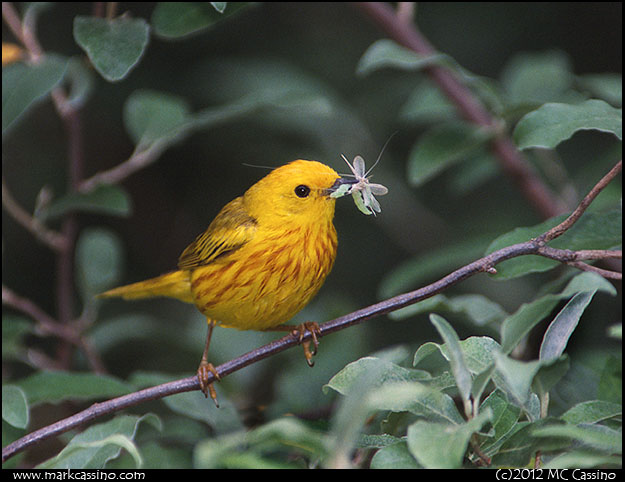
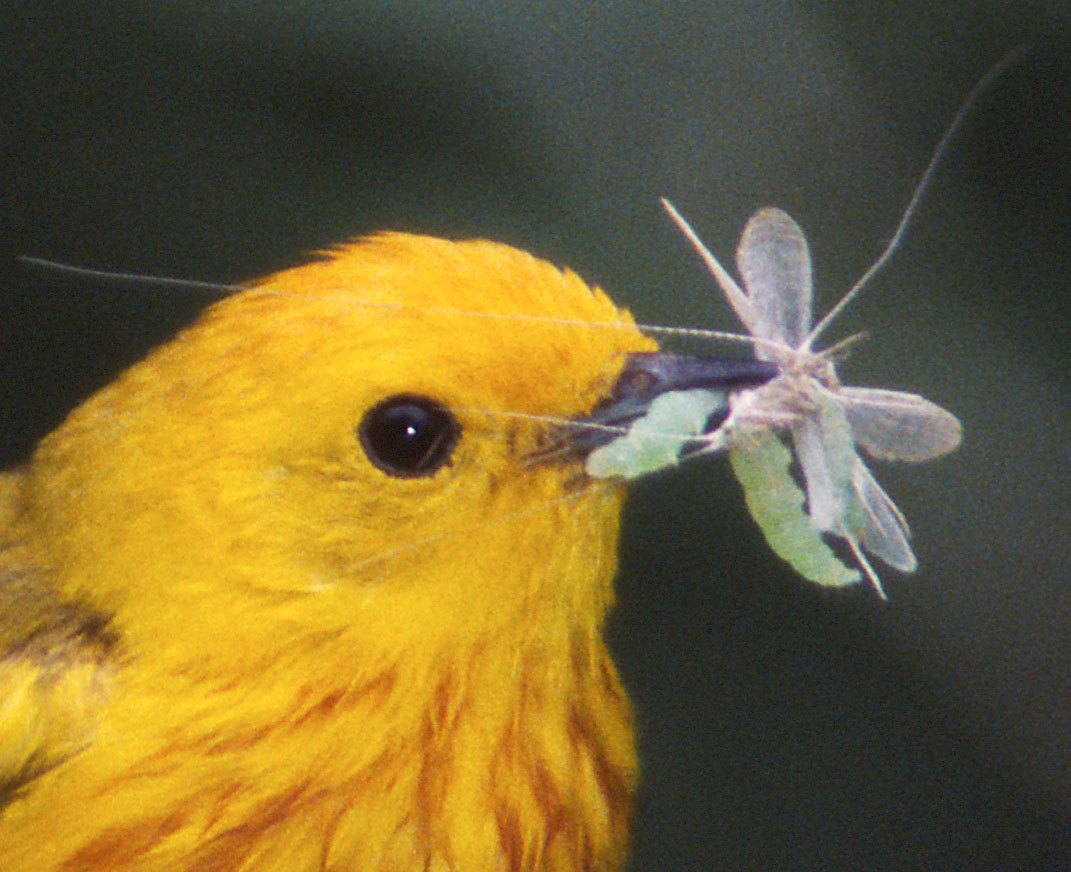
I have a few more 50mm lenses to test yet - most notably I’d like to try the Pentax 50mm f1.7 (I have both an FA and M version on hand), SMC M 50 f4 macro, and Sigma EX 50mm f 2.8 macro.
For birds… I’ve finally come to regret selling my A* 200 f2.8…
